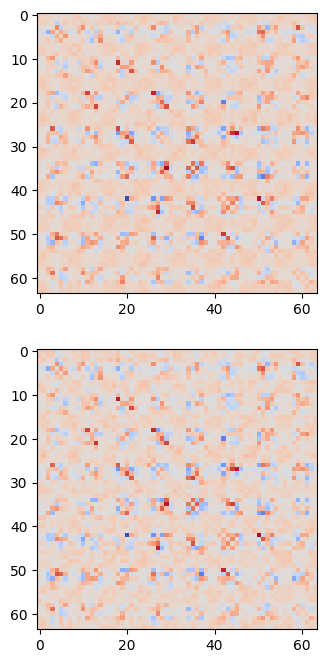Simulation 4
Resistance Catastrophic forgetting¶
import numpy as np
import pickle
from simulation.network import AttractorNetwork, Langevin, relax
from simulation.utils import fetch_digits_data, preprocess_digits_data, continous_inference_and_learning, run_network, evaluate_reconstruction_accuracy, vfe, report_network_evaluation, performance_metrics
from simulation.utils import continous_inference_and_learning
from copy import deepcopy
import pandas as pd
import matplotlib.pyplot as pltLoad in simulations¶
From Simulation 2
results_filename = 'parameter_search_results.pkl'
# Optionally, load the results back to verify (or use in a later session)
try:
with open(results_filename, 'rb') as f:
results = pickle.load(f)
print(f"Results successfully loaded from {results_filename}")
# You can now use loaded_results instead of results if needed
except Exception as e:
print(f"Error loading results: {e}")Results successfully loaded from parameter_search_results.pkl
results_filename = 'performance_results.pkl'
# Optionally, load the results back to verify (or for later use)
try:
with open(results_filename, 'rb') as f:
performance_results = pickle.load(f)
print(f"Successfully loaded results from {results_filename}")
# You can add a check here, e.g., comparing len(results) and len(loaded_results)
except Exception as e:
print(f"Error loading performance results: {e}")Successfully loaded results from performance_results.pkl
Pick a simulation case from the optimal regime¶
evidence_level = 11
inverse_temperature = 0.1668
# Find the entry in performance_results that matches the specified evidence_level and inverse_temperature
matching_entry = None
for i, entry in enumerate(performance_results):
# Use np.isclose for floating point comparison
if np.isclose(entry['params']['evidence_level'], evidence_level, rtol=0.01) and \
np.isclose(entry['params']['inverse_temperature'], inverse_temperature, rtol=0.01):
matching_entry = entry
break
print(matching_entry)
training_output_modified = deepcopy(results[i]['training_output'])
nw = deepcopy(matching_entry['nw'])
fig, axs = plt.subplots(2, 1, figsize=(10, 8))
axs[0].imshow(nw.get_J(), cmap='coolwarm')
J_before = nw.get_J()
num_steps = 50000 # just like during training
learning_rate = 0.001 # just like during training
inverse_temperature = 1 # increased
for i in range(num_steps): #keep on running with zero bias
nw.update(inverse_temperature=inverse_temperature, learning_rate=learning_rate, least_action=False)
axs[1].imshow(nw.get_J(), cmap='coolwarm')
J_after = nw.get_J()Fetching long content....

upper_tri_indices = np.triu_indices_from(J_before, k=1)
J_before_upper = J_before[upper_tri_indices]
J_after_upper = J_after[upper_tri_indices]
np.corrcoef(J_before_upper, J_after_upper)[0,1]np.float64(0.9728280402261207)